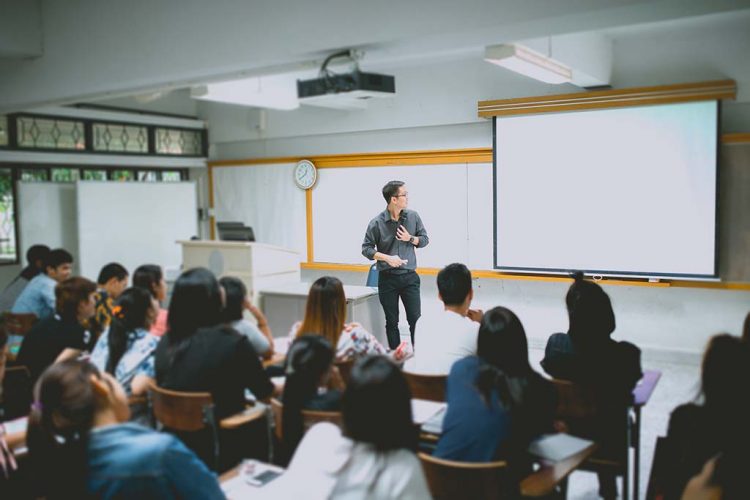Improve Your Child’s Performance with Primary Science Tuition Singapore
Improve Your Child’s Performance with Primary Science Tuition Singapore
Blog Article
A Comprehensive Overview to the Numerous Learning Methods in Key Science Direction
The exploration of diverse learning approaches in key scientific research direction provides an opportunity for educators to boost student involvement and comprehension significantly. By analyzing hands-on learning methods, inquiry-based methods, and collaborative approaches, we can determine efficient methods that deal with numerous finding out styles. In addition, the combination of modern technology and set apart instruction plays a critical duty in fostering a comprehensive atmosphere. However, the inquiry remains: just how can these approaches be successfully carried out in the classroom to maximize their effect? The solution hinges on a more detailed assessment of each strategy and its implications for training science.

Hands-On Learning Methods
Hands-on learning strategies play an essential duty in main science direction, engaging students in energetic expedition and experimentation. These methods allow learners to engage directly with products and phenomena, fostering a much deeper understanding of scientific principles. By using manipulatives, designs, and real-life experiments, educators produce an environment where students can observe, assume, and test their concepts.
Such techniques not just boost understanding yet additionally grow important reasoning and analytic skills. When students join tasks like constructing simple makers, planting seeds, or performing chemical responses, they are encouraged to ask questions and seek solutions via their own observations. This experiential strategy aids to demystify intricate scientific principles, making them extra relatable and obtainable.
Additionally, hands-on learning promotes cooperation amongst peers, as trainees often operate in teams to perform experiments or share findings. This team effort not just improves their knowing experience yet likewise develops vital social skills. Eventually, integrating hands-on techniques in primary scientific research instruction cultivates a lifelong love of discovering and interest regarding the environment, laying a solid structure for future academic pursuits in science and past.
Inquiry-Based Understanding
Inquiry-based learning is an instructional technique that urges trainees to ask questions, check out phenomena, and create their very own understanding of clinical principles. This approach moves the emphasis from typical teacher-led guideline to an extra student-centered experience, where learners take the campaign in their educational journey. By cultivating curiosity, inquiry-based understanding promotes much deeper interaction with the product, permitting trainees to check out subjects in a meaningful context.
In method, this technique frequently includes hands-on experiments, observations, and vital thinking tasks that align very closely with the scientific approach. Students are encouraged to create hypotheses, layout examinations, and analyze information, which grows vital skills such as problem-solving and logical reasoning. The duty of the educator in this framework is to promote expedition, leading students with the query procedure while urging independent thought and partnership.
Additionally, inquiry-based knowing nurtures a sense of ownership over the knowing process, encouraging pupils to go after knowledge proactively. This method not only boosts understanding of clinical concepts yet also fosters a long-lasting love for understanding, equipping pupils with the skills essential to browse an increasingly complex world.
Collaborative Discovering Approaches
Collaborative understanding strategies encourage pupils to involve in meaningful interactions with peers, promoting a common obligation for their educational outcomes. In primary scientific research instruction, these strategies motivate students to interact to check out scientific ideas, fix issues, and perform experiments (primary science tuition Singapore). By joining team tasks, trainees can leverage diverse point of views, enabling richer understanding and retention of clinical knowledge
One trick facet of collaborative understanding is the emphasis on interaction abilities. Students should express their thoughts, pay attention proactively to others, and discuss concepts, every one of which are important expertises in both real-world and scholastic contexts. This social communication not only enhances their understanding of scientific concepts yet also promotes synergy and dispute resolution abilities.
When students read the full info here see the value of their payments within a group, they are much more most likely to take possession of their learning trip. Generally, incorporating collaborative understanding techniques in key science instruction grows a dynamic understanding environment that prepares students for future scholastic and social challenges.
Technology Assimilation in Scientific Research
The integration of modern technology in primary scientific research direction enhances learning experiences by supplying ingenious devices and resources that support various teaching techniques, including collective understanding - primary science tuition Singapore. Making use of electronic platforms, simulations, and interactive applications permits pupils to engage deeply with clinical concepts, assisting in an extra hands-on method to learning
Online labs, for example, enable students to carry out experiments safely and efficiently, promoting inquiry-based learning. These devices can imitate real-world clinical situations, permitting pupils to visualize complex processes that would be difficult to reproduce in a traditional class setting. Innovation cultivates interaction and cooperation among pupils, as they can share searchings for and function with each other on jobs with on-line systems.
In addition, multimedia discussions and academic video clips can enhance lessons by satisfying diverse knowing designs, making abstract principles more obtainable. Information evaluation devices likewise equip pupils to gather and translate clinical data, reinforcing critical assuming abilities. In general, the critical consolidation of innovation in primary scientific research instruction not only enhances engagement but likewise prepares pupils for a highly sophisticated culture, equipping them with important skills for future scientific ventures.
Differentiated Instruction Techniques
Set apart guideline approaches are essential for resolving the diverse needs of students in main scientific research education and learning. These techniques allow instructors to customize their training approaches to fit differing abilities, rate of interests, and finding out styles within the classroom. By utilizing separated instruction, instructors can create a comprehensive atmosphere that cultivates engagement and enhances understanding of scientific principles.
One effective method is to make use of versatile organizing, which enables trainees to work together with peers at comparable skill levels or with varying viewpoints. This strategy urges peer discovering and promotes essential thinking. Additionally, offering choices in projects can equip pupils, permitting them to pick projects that reverberate with their passions while still satisfying curricular goals.
Additionally, integrating tiered assignments is one more important method. Deliberately tasks with varying levels of intricacy, instructors can ensure that all students are suitably tested, no matter of their effectiveness. Using developmental evaluations to assess comprehending more makes it possible for teachers to adjust their instructional methods dynamically, making certain that each student receives the support they require.
Ultimately, applying set apart guideline methods in key science education not just enhances trainee learning end results but also grows a passion for scientific research, preparing students for future scholastic pursuits.

Final Thought
In summary, effective key scientific research guideline demands original site a complex approach that includes hands-on discovering, inquiry-based methods, and collaborative techniques. The integration of modern technology and differentiated instruction better caters to diverse knowing styles, promoting a setting favorable to exploration and critical thinking.
The exploration of varied discovering methods in main scientific research direction offers a possibility for instructors to enhance pupil involvement and comprehension significantly.Hands-on knowing methods play a critical role moved here in key science instruction, involving trainees in active exploration and experimentation.Inquiry-based learning is a training approach that urges pupils to ask inquiries, explore sensations, and build their own understanding of scientific concepts.Joint understanding approaches empower pupils to involve in significant communications with peers, cultivating a shared obligation for their academic end results. On the whole, including joint knowing techniques in main scientific research direction grows a vibrant understanding atmosphere that prepares trainees for future academic and social challenges.
Report this page